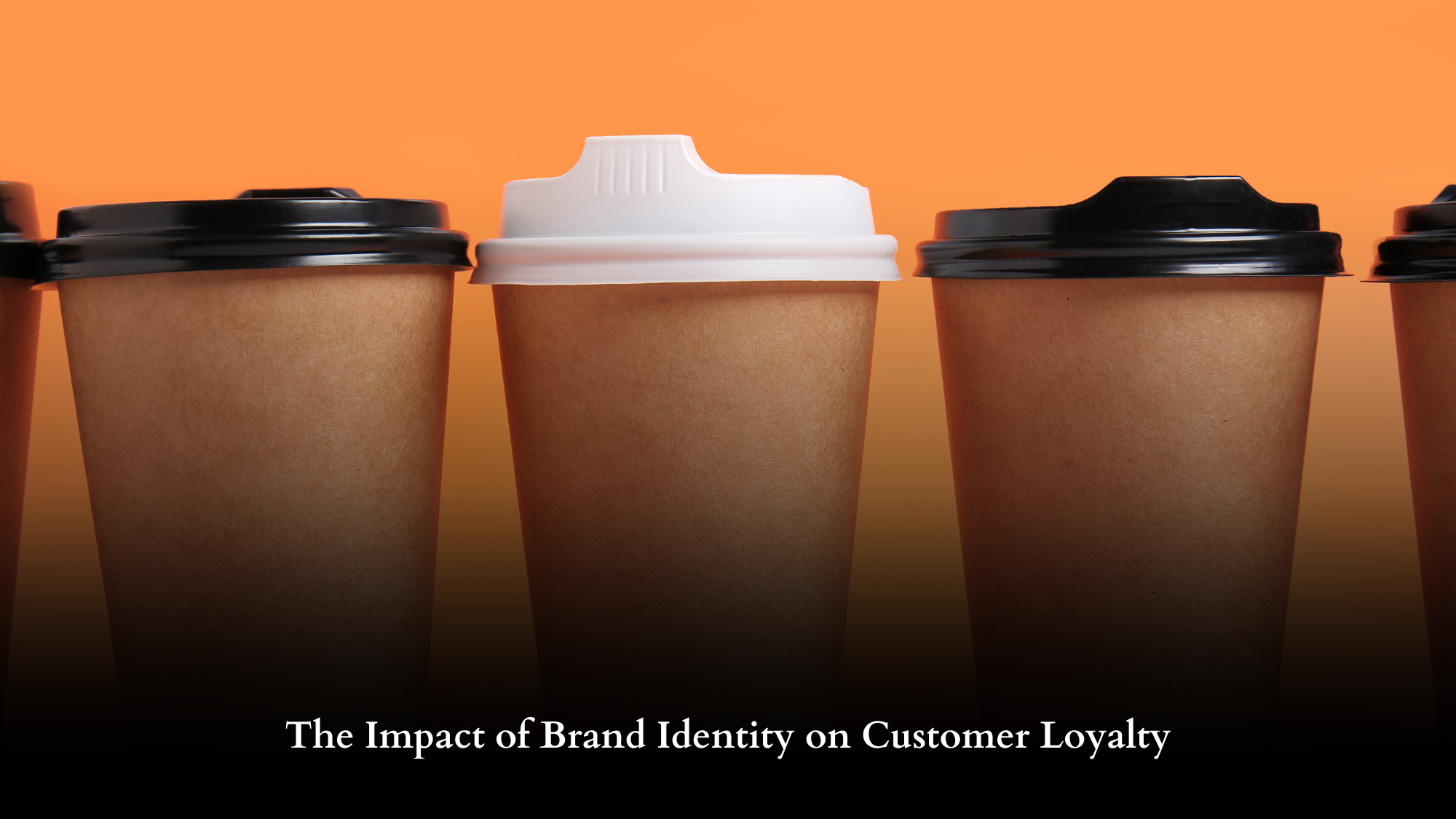
In today’s competitive market, building a loyal customer base is one of the biggest challenges for any business. You might have a great product, but if customers don’t remember you or feel a connection to your brand, they’re more likely to wander off to a competitor. This is where brand identity comes in—it’s the cornerstone of how customers perceive your business and what keeps them coming back for more.
Brand identity isn’t just about having a fancy logo or a catchy tagline. It’s about creating a cohesive image that represents who you are, what you stand for, and why people should care about you. When done right, a strong brand identity can build trust, create emotional connections, and inspire loyalty. In this blog, we’ll explore how a well-defined brand identity can have a major impact on customer loyalty, and why it’s crucial for long-term success.
What Makes Up Brand Identity?
- Visual Identity: Logos, Colors, and Typography
When people think of your brand, the first thing that often comes to mind is your visual identity—the logo, colors, and fonts that represent your business. Think about Apple’s sleek, minimalist logo or Nike’s bold, simple swoosh. These visuals aren’t just easy to recognize; they evoke certain feelings.
Colors and typography are also key players in brand identity. Bright colors and playful fonts might signal that your brand is fun and approachable, while neutral tones and classic fonts can convey sophistication and luxury. When these elements come together in a way that matches your brand’s personality, they create a visual language that customers can easily recognize and relate to.
- Brand Voice and Messaging
Your brand voice is how your brand “speaks” to your audience. Whether you communicate through social media posts, emails, or advertisements, your tone of voice plays a big role in shaping your brand’s personality. Are you funny and casual, or professional and authoritative? Whatever your style, it should stay consistent across all channels.
Consistent messaging helps build familiarity, which in turn builds trust. If your audience knows what to expect from you—whether it’s your humor, empathy, or straightforward advice—they’re more likely to feel comfortable and confident in choosing your brand time and time again.
- Brand Values and Mission
Your brand values and mission define why you do what you do. Customers today care deeply about the values of the brands they support. If your brand champions sustainability, diversity, or quality craftsmanship, communicating these values clearly can help you build a deeper connection with your customers.
People are drawn to brands that reflect their own beliefs. When your brand values align with those of your customers, you’re not just selling a product—you’re building a relationship based on shared ideals, which is a powerful way to inspire loyalty.
How Brand Identity Impacts Customer Loyalty
- Building Trust and Credibility
One of the biggest impacts of a strong brand identity is building trust. Customers want to know that they can rely on you. When your brand consistently delivers on its promises and maintains a coherent image, customers are more likely to see you as dependable and trustworthy. This credibility is a key ingredient for customer loyalty—people are much more likely to stick with a brand they trust.
Take Starbucks, for example. From their iconic green logo to their store ambiance and personalized service, every part of Starbucks’ brand identity communicates warmth, comfort, and quality. Customers know what to expect, whether they’re grabbing a coffee in New York or Tokyo. That consistency builds trust, and it’s a big reason why people keep coming back.
- Creating Emotional Connections
Brand identity isn’t just about the look and feel—it’s about creating an emotional connection with your audience. When a brand effectively communicates its story, values, and personality, it resonates on an emotional level. This emotional connection makes customers feel personally invested in the brand’s success, turning them into loyal advocates.
Nike is a great example of this. Their brand identity revolves around motivation, empowerment, and striving for greatness. The “Just Do It” slogan, powerful visuals, and stories of real athletes overcoming obstacles aren’t just about selling shoes—they’re about inspiring people to push beyond their limits. This emotional appeal is what makes Nike customers loyal not just to the product, but to the brand’s message and mission.
- Enhancing Brand Recall and Recognition
A well-crafted brand identity makes it easy for customers to remember you. Consistent visual elements like colors, logos, and fonts help with brand recall. When your brand is easy to recognize, it stands out in the minds of customers. This recognition becomes even more important when customers are making purchasing decisions.
Consider Apple. The sleek logo, the clean design, the minimalist packaging—it’s all part of Apple’s brand identity. This consistency means that when customers see an Apple product, they immediately associate it with quality, innovation, and premium experience. The familiarity makes them more likely to choose Apple over competitors.
- Differentiating from Competitors
In a market crowded with options, having a distinct brand identity can set you apart from your competition. If your brand has a unique story or a particular visual style, it’s more likely to stand out and attract a dedicated following.
Think about how Patagonia uses its brand identity to differentiate itself. Their focus on sustainability and environmental activism is clear in their messaging, their choice of materials, and their brand voice. They’re not just another outdoor apparel company—they’re a company with a purpose. This strong differentiation resonates with environmentally conscious consumers, building loyalty that goes beyond the product itself.
Real-World Examples of Brand Identity Driving Loyalty
- Apple: Simplicity and Innovation
Apple has mastered the art of creating a brand identity that drives customer loyalty. Their minimalist design, simple logo, and sleek packaging all reflect their commitment to innovation and simplicity. More than just selling devices, Apple has built an ecosystem that offers a premium user experience, which keeps customers loyal and eager to purchase the latest products.
Apple’s identity resonates with consumers who value both design and functionality. Their consistent focus on providing quality, innovative products has helped them maintain a strong, loyal customer base that not only buys their products but advocates for the brand.
- Nike: Emotional Storytelling
Nike has built a brand identity that’s all about motivation and pushing beyond limits. Their iconic slogan, “Just Do It,” along with emotionally charged ads featuring real athletes, connects with customers on a deep level. Nike’s messaging is all about empowerment, and their visual branding reflects action, energy, and passion.
This emotional storytelling makes Nike more than just a sportswear company—it makes it a brand that represents personal achievement and determination. That connection drives customer loyalty because people see Nike as part of their journey to success.
- Starbucks: Creating a Community
Starbucks has built a brand identity that’s centered around community and comfort. From the welcoming ambiance of their stores to the personalized experience of having your name on your cup, Starbucks makes customers feel like they belong.
Their focus on creating a “third place” between home and work is reflected in everything they do, from their store design to their brand voice. This sense of belonging and familiarity makes customers keep coming back, not just for the coffee, but for the experience.
How to Strengthen Your Brand Identity for Better Customer Loyalty
If you want to build a loyal customer base, it’s important to invest in a strong brand identity. Here are a few ways to get started:
- Be Consistent: Whether it’s your visuals, your messaging, or your tone, consistency builds trust. Make sure every interaction a customer has with your brand feels cohesive.
- Know Your Audience: Understand who your customers are and what matters to them. Align your brand values with theirs, and communicate in a way that resonates with them.
- Tell Your Story: People love stories. Make sure your brand has a compelling story that customers can connect with emotionally.
- Listen and Adapt: Use customer feedback to refine your brand identity. Don’t be afraid to evolve if it means staying relevant to your audience.
Conclusion
Brand identity plays a huge role in driving customer loyalty. It’s about more than just having a memorable logo or a catchy slogan—it’s about building trust, creating emotional connections, and standing out from the competition. Brands like Apple, Nike, and Starbucks show us just how powerful a strong brand identity can be when it comes to keeping customers coming back.
By investing in a well-defined brand identity—one that speaks to your audience’s needs, values, and aspirations—you can create a loyal customer base that will stick with you for the long haul. Remember, loyalty isn’t just about great products; it’s about creating a brand that customers can believe in and connect with on a personal level.
Recent blog posts
Subscribe to get Notified
Subscribe to learn about new product features, the latest in technology, solutions, and updates.


